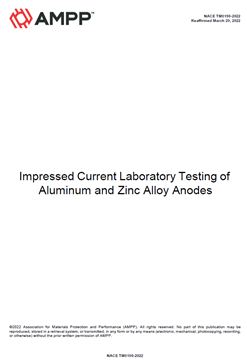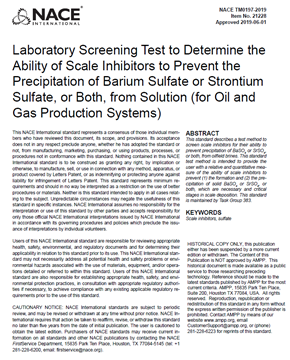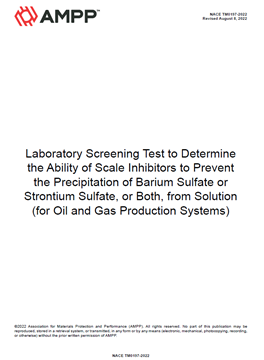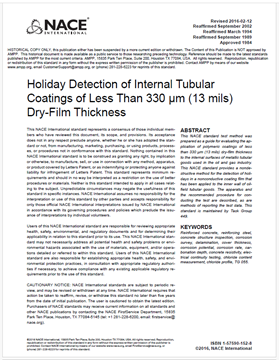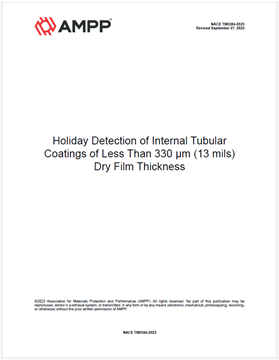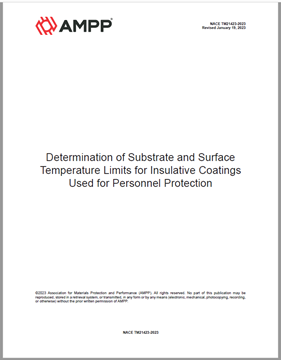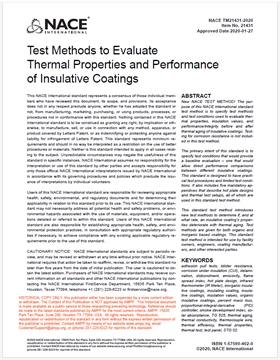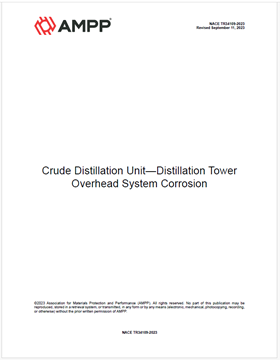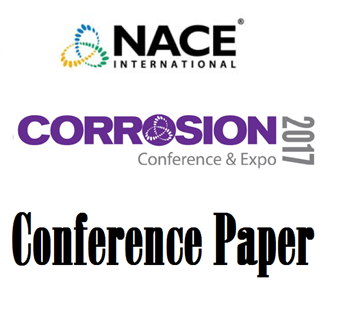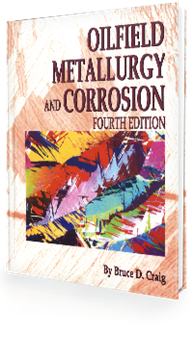Search
Oil and Gas Production
View as
Sort by
Display
per page
NACE TM0190-2022, Impressed Current Laboratory Testing of Aluminum and Zinc Alloy Anodes
Product Number:
NACE TM0190-2022
Publication Date:
2022
$109.00
NACE TM0197-2019, Laboratory Screening Test to Determine the Ability of Scale Inhibitors to Prevent the Precipitation of Barium Sulfate or Strontium Sulfate, or Both, from Solution (for Oil and Gas Production Systems)
Product Number:
21228-2019
Publication Date:
2019
$179.00
NACE TM0197-2022, Laboratory Screening Test to Determine the Ability of Scale Inhibitors to Prevent the Precipitation of Barium Sulfate or Strontium Sulfate, or Both, from Solution (for Oil and Gas Production Systems)
Product Number:
NACE TM0197-2022
Publication Date:
2022
$109.00
NACE TM0316-2016, “Four-Point Bend Testing of Materials for Oil and Gas Applications”
Product Number:
21404-SG
Publication Date:
2016
$179.00
NACE TM0374-HD2001-SG, Laboratory Screening Tests to Determine the Ability of Scale Inhibitors to Prevent the Precipitation of Calcium Sulfate and Calcium Carbonate from Solution (for Oil and Gas Production Systems)
Product Number:
21208-HD2001-SG
ISBN:
1-57590-124-2
$179.00
NACE TM0384-2016, Detection of Internal Tubular Coatings of Less Than 250 μm (10 mils) Dry-Film Thickness
Product Number:
21216-SG
Publication Date:
2016
$179.00
NACE TM0384-2023, Holiday Detection of Internal Tubular Coatings of Less Than 330 µm (13 mils) Dry Film Thickness
Product Number:
NACE TM0384-2023
Publication Date:
2023
$109.00
NACE TM21423-2023, Determination of Substrate and Surface Temperature Limits for Insulative Coatings Used for Personnel Protection
Product Number:
NACE TM21423-2023
Publication Date:
2023
$109.00
NACE TM21431-2020, Test Methods to Evaluate Thermal Properties and Performance of Insulative Coatings
Product Number:
21431-2020
Publication Date:
2020
$179.00
NACE TR34109-2023, Crude Distillation Unit—Distillation Tower Overhead System Corrosion
Product Number:
NACE TR34109-2023
Publication Date:
2023
$109.00
Non-Ideal Gases and Solutions Complexes and Ion Pairs in Corrosion
Product Number:
51317--8835-SG
ISBN:
8835 2017 CP
Publication Date:
2017
$20.00
Oilfield Metallurgy and Corrosion, Fourth Edition (e-Book)
Product Number:
38599-E
ISBN:
9780615961354
Publication Date:
2014
$150.00

